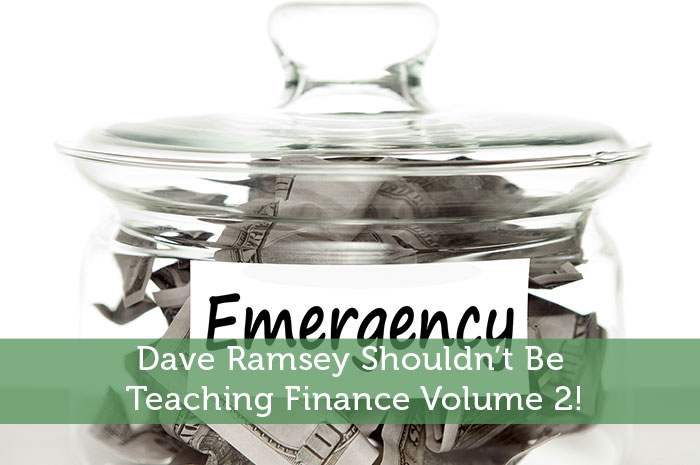To be honest I’m not the type of person that really likes to rag on people and their ideas. So, when I was presented the opportunity to write this series, I was naturally a bit concerned if it was a good idea or not. However, I agreed and wrote the first post based on a few articles I researched.
Well, after looking more into Dave Ramsey’s theories, I’m happy I decided to take part in this project. The guy’s views on many things are absolutely crazy! So, for the next few weeks, I’ll be picking apart his ideas like a buzzard on road kill. Today, we’re going to talk about his insane $1,000 savings idea.
What Is Ramsey’s $1,000 Savings Rule?
Dave promotes a wacked out idea that if you have credit card debt, you should put a thousand dollars into savings for emergencies. Once you have a thousand bucks saved, you should use the rest of the money you have available to pay down your credit card debt.
Why This Idea Is Seems OK
- Everyone Knows Having Savings Is A Good Idea – We all know that saving for emergencies is a good idea. Psychologically, we take what we know being that savings is good and combine it with what we’re being told. In this case, Dave does promote the idea of savings, so subliminally most consumers think “He must be right!”
- We All Know That Overwhelming Credit Card Debt Is Bad – We all know that credit card debt can get expensive. Knowing that having an incredible amount of credit card debt is bad makes us automatically want to believe people that give us a plan for paying that debt off!
So Why Am I Saying This Rule Is Absurd?
I agree with having savings for emergencies and I agree with aggressively paying down credit card debt. So, where is this plan wrong? The plan is wrong in the savings amount! In Dave Ramsey’s twisted mind, a thousand bucks should be enough to cover just about any emergency you may come across. So, leaving yourself with a thousand bucks SHOULD put you in a good place. I can think of tons of emergencies that will require you to have more than a thousand bucks in your savings account. If you don’t you’ll be up Sh^%’s creek without a paddle. Here’s a quick list from the top of my mind…
- Losing Your Job – Finding a job can take a week, it could take 3 months. You never know! If you lose your job today, can you survive for months on a thousand dollars? I know I couldn’t.
- Emergency Home Repairs – Let’s say your old roof starts to leak. If you don’t repair it, the damage will continue to get worse and worse leading to more expensive repairs. However, fixing a leaky roof could cost thousands of bucks. Under Ramsey’s plan, if this happens to you, you may have to get used to mold spores in your attic while you wait to save for the fix!
- Death Of A Family Member – Would you feel bad if you couldn’t make it to a family member’s funeral because you couldn’t afford it. Out of state trips will cost thousands in last minute airfare, hotel rooms, rental cars and more! Unfortunately, on Dave’s plan you’d be out of luck!
Final Thoughts
If you’re in debt, you should aggressively work to pay it off! You should also aggressively work to build an emergency fund. However a good rule of thumb on how large that emergency fund should be is to save a minimum of 3 months’ worth of your salary. From there, you honestly should be able to handle any financial hurdle.





Taking Dave Ramsey’s Financial Peace University changed our lives and our relationship with money. I agree with you — $1,000 is not enough for a real emergency. However, I don’t think you worked all the way through his course. Yes — Step 1 is the emergency fund — save $1,000 as fast as possible. This get’s the ball rolling. Step 3 — 3-6 months expenses in savings – this covers what you are talking about. You may want to get all your facts before writing — I see you have a Finance Blog — sorry, but you just lost big credibility by having wrong info.
Best of luck!
Debbie